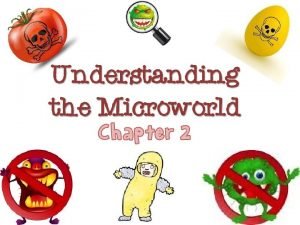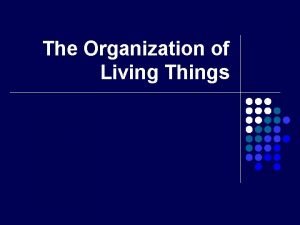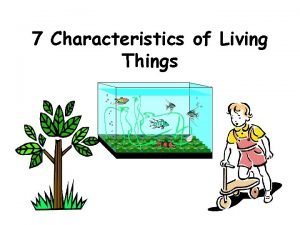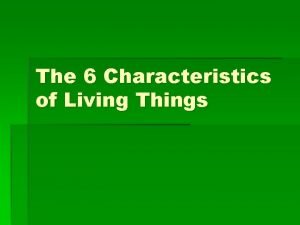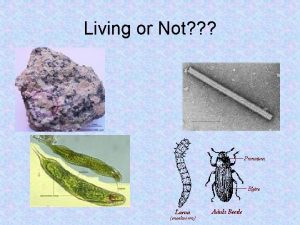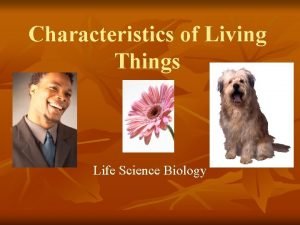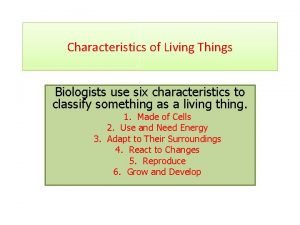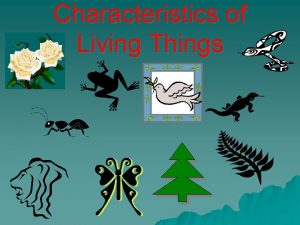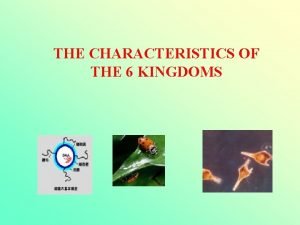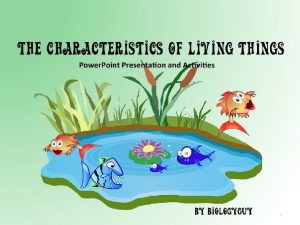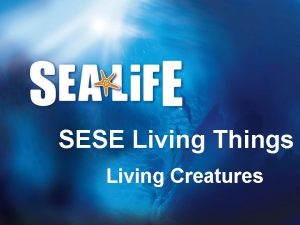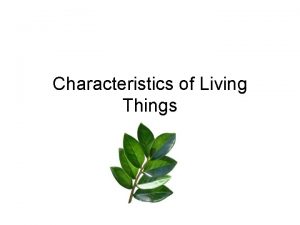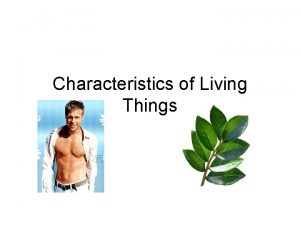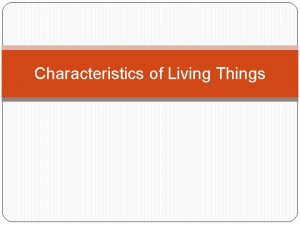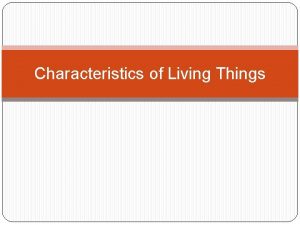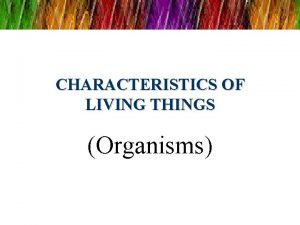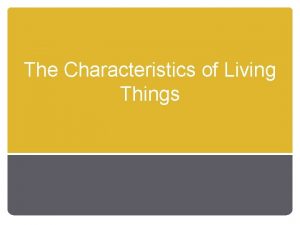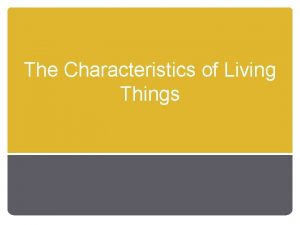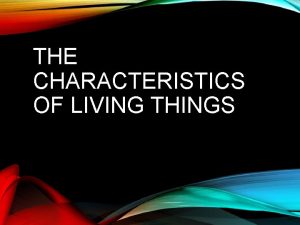Characteristics of Living Things Living creatures are ORGANIZED

















- Slides: 17

Characteristics of Living Things

Living creatures are ORGANIZED • All made of the same collection of chemicals, but we are organized as… – molecules • proteins, fats, carbohydrates, nucleic acids proteins carbohydrates DNA A 2

Living creatures are ORGANIZED • All made of the same collection of chemicals, but we are organized as… – organelles & cells • plant cells & animal cells plant cell animal cell A 3

Living creatures are ORGANIZED • All made of the same collection of chemicals, but we are organized as… – organs & organ systems • respiratory, circulatory, digestive, etc. A 4

Cells of living things carry out Life Processes necessary for Life. An organism is said to be alive as long as the cells perform these __8__ life processes. 1. Nutrition- Taking in food and processing the materials needed for life There are 2 types: Autotrophic- Plants. Make own food Heterotrophic- Animals - Need to go out and get food A 5

Respiration • Release of energy from the food and oxygen we take in. Mitochondria is the organelle that performs respiration. • There are two types: – Aerobic- uses oxygen to make energy – Anaerobic- does not use oxygen to make energy A 6

Excretion • Removal of liquid wastes. Egestion-is the removal of solid wastes. A 7

Regulation • Control of all activities in an organism. This helps maintain balance (Homeostasis). 2 body systems work to maintain this. Nervous and Endocrine(hormones) A 8

Growth • To increase in size A 9

Synthesis • Making simple substances more complex. • Example Photosynthesis- plants use Co 2 and H 2 o along with sunlight to make Glucose (sugar) A 10

Transport • Distributing materials throughout the organism. Examples: • Cytoplasm – liquid within the cell • Circulatory system- blood carries materials needed for body ( oxygen, nutrients, hormones) A 11

Reproduction • Production of a new individual. Not needed for individual to survive. Must have for the species to survive. Two Types: Sexual- 2 Parents Asexual- 1 Parent A 12

Virus • A Virus is an exception. It cannot carry out all the life processes. To stay alive a virus must invade the cell of a living organism. It needs a Host cell to stay alive. A 13

Metabolism • Is the total of all the life processes. When a person states he has high or low metabolism this is what they are talking about. It is the combination of all the life functions working together. A 14

Homeostasis • Is the body maintaining internal balance (a steady state). When all the life processes are occurring normally, it is maintaining homeostasis. A 15

• If a body is not in homeostasis then FEEDBACK MECHANISMS kick in • Examples: • Body Temperature • Sweating –cools body • Shivering- heats the body • Sugar Levels– Pancreas produces hormone called Insulin- maintains glucose (sugar) levels A 16

In Plants Guard Cells- open and close to maintain water balance A 17
 Insidan region jh
Insidan region jh How living things are organized
How living things are organized Ecosystem living and nonliving things
Ecosystem living and nonliving things Life processes
Life processes Four living creatures covered with eyes
Four living creatures covered with eyes Small living creature tom
Small living creature tom Small living creatures tom
Small living creatures tom Organization of living creatures
Organization of living creatures What is the smallest living unit
What is the smallest living unit 7 characteristics of life
7 characteristics of life Six characteristics of living things
Six characteristics of living things Movement characteristics of living things
Movement characteristics of living things Six characteristics of living things
Six characteristics of living things The six characteristics of life
The six characteristics of life Two characteristics of living things
Two characteristics of living things What are the nine characteristics of life
What are the nine characteristics of life Wolf kingdom classification
Wolf kingdom classification Characteristics of living things mrs gren
Characteristics of living things mrs gren





